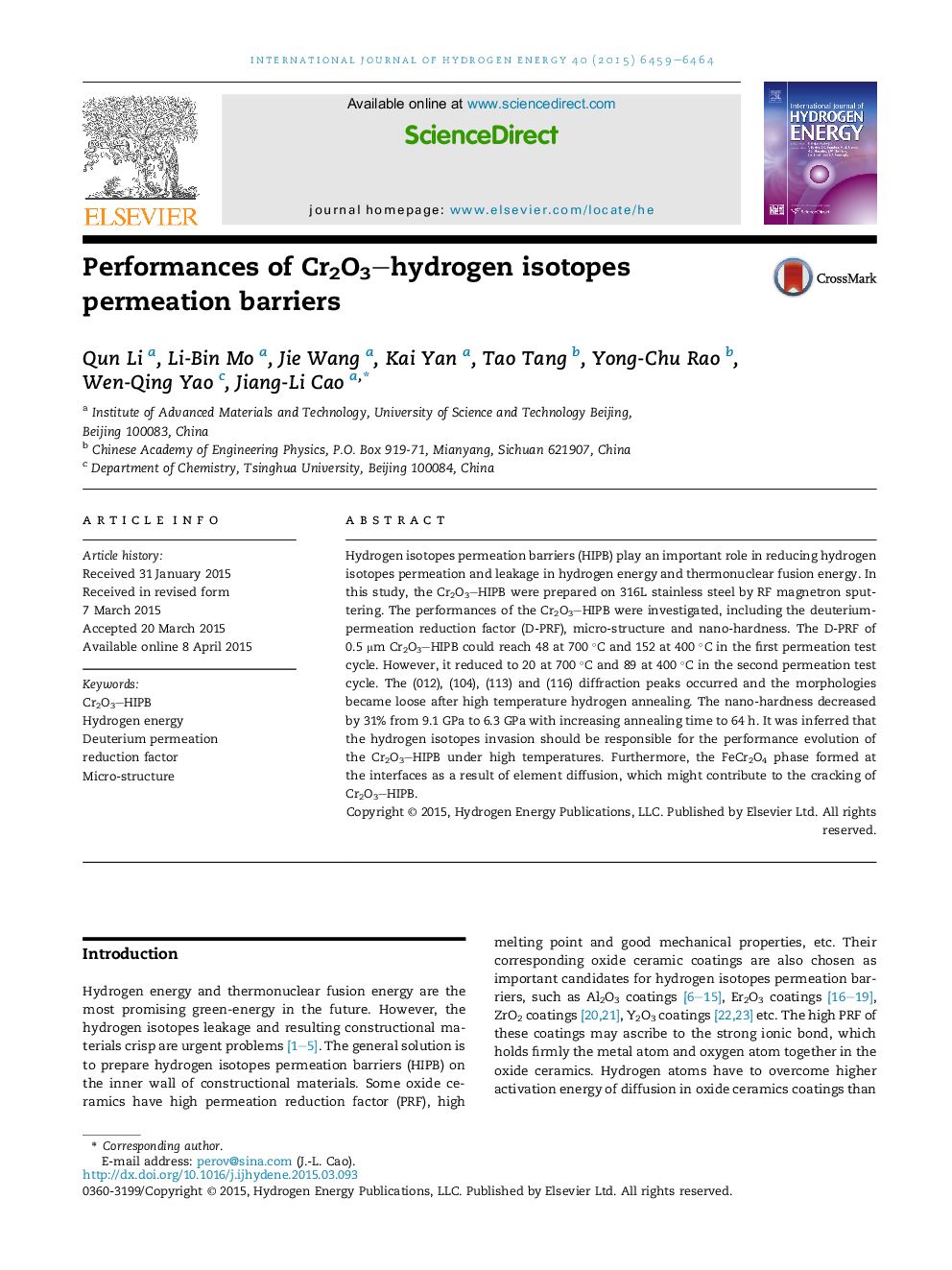| Article ID | Journal | Published Year | Pages | File Type |
|---|---|---|---|---|
| 7715560 | International Journal of Hydrogen Energy | 2015 | 6 Pages |
Abstract
Hydrogen isotopes permeation barriers (HIPB) play an important role in reducing hydrogen isotopes permeation and leakage in hydrogen energy and thermonuclear fusion energy. In this study, the Cr2O3-HIPB were prepared on 316L stainless steel by RF magnetron sputtering. The performances of the Cr2O3-HIPB were investigated, including the deuterium-permeation reduction factor (D-PRF), micro-structure and nano-hardness. The D-PRF of 0.5 μm Cr2O3-HIPB could reach 48 at 700 °C and 152 at 400 °C in the first permeation test cycle. However, it reduced to 20 at 700 °C and 89 at 400 °C in the second permeation test cycle. The (012), (104), (113) and (116) diffraction peaks occurred and the morphologies became loose after high temperature hydrogen annealing. The nano-hardness decreased by 31% from 9.1 GPa to 6.3 GPa with increasing annealing time to 64 h. It was inferred that the hydrogen isotopes invasion should be responsible for the performance evolution of the Cr2O3-HIPB under high temperatures. Furthermore, the FeCr2O4 phase formed at the interfaces as a result of element diffusion, which might contribute to the cracking of Cr2O3-HIPB.
Keywords
Related Topics
Physical Sciences and Engineering
Chemistry
Electrochemistry
Authors
Qun Li, Li-Bin Mo, Jie Wang, Kai Yan, Tao Tang, Yong-Chu Rao, Wen-Qing Yao, Jiang-Li Cao,
